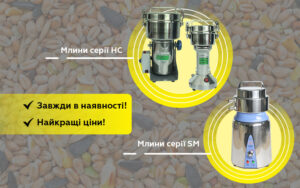Understanding R-Values of Mineral Wool in Bowling Green Homes
When it comes to insulating homes in Bowling Green understanding R-values is crucial—especially when using mineral wool. Simply put, the R-value tells you how well a material resists heat flow. The higher the R-value, the better the insulation performs. Mineral wool, known for its durability and fire resistance, typically offers high R-values, making it a strong choice for many Kentucky homeowners.
In this article, we’ll break down what R-values mean, how mineral wool compares to other insulation types, and what you need to consider before choosing it for your home in Bowling Green. We’ll also explore common questions, technical specifications, and how to optimize insulation performance.
What Is R-Value and Why Does It Matter?
The R-value measures thermal resistance. In simple terms, it tells you how good an insulation material is at keeping heat inside during winter and outside during summer. The higher the number, the better it performs. It’s one of the most important factors homeowners should consider when planning insulation upgrades.
Why It Matters in Bowling Green
Bowling Green has a mixed climate, with cold winters and hot, humid summers. That means insulation needs to do double duty—keeping the house cool in July and warm in January. Mineral wool’s naturally high R-values make it an effective year-round performer.
For example:
- R-13 is common for walls in moderate climates
- R-30 to R-49 is recommended for attics in colder zones
Choosing an insulation with the right R-value ensures energy efficiency, better indoor comfort, and reduced heating and cooling costs.
How Mineral Wool Insulation Performs in Bowling Green
Mineral wool insulation typically offers R-values ranging from R-3.0 to R-3.3 per inch of thickness. This makes it competitive with or superior to many standard insulation materials.
Benefits Beyond Thermal Resistance
- Fire Resistance: Mineral wool is non-combustible and can withstand temperatures over 1,800°F, making it ideal for enhancing fire safety.
- Moisture Resistance: It naturally repels water, maintaining its thermal performance even in humid environments.
- Sound Control: Mineral wool excels at absorbing sound, which helps reduce noise between rooms and floors.
These characteristics make mineral wool especially beneficial for homes in areas like Bowling Green where moisture, temperature swings, and urban noise can be concerns.

Comparison of Common Insulation Types
Here’s how mineral wool stacks up against other common insulation materials:
| Insulation Type | R-Value per Inch | Fire Resistance | Moisture Resistance | Sound Dampening |
| Mineral Wool | 3.0 – 3.3 | Excellent | Excellent | Excellent |
| Spray Foam | 3.5 – 6.5 | Moderate | High (closed-cell) | Moderate |
| Fiberglass Batt | 2.9 – 3.8 | Poor | Poor | Moderate |
| Blown-In Cellulose | 3.2 – 3.8 | Moderate | Poor | Good |
Bonus Tip: If your goal is to improve thermal comfort while enhancing fire safety and noise control, mineral wool may offer more comprehensive benefits than fiberglass or cellulose, especially for multi-story homes or homes near busy roads.
Technical Specifications of Mineral Wool
| Property | Specification |
| R-Value (per inch) | 3.0 – 3.3 |
| Density | ~1.5 – 2.2 lbs/ft³ |
| Fire Resistance | Up to 1,800°F |
| Water Absorption | < 1% (repels moisture) |
| Sound Transmission Class | 45 – 52 STC |
| Vapor Permeability | 30 – 50 perms |
These specs highlight mineral wool’s superior performance across multiple areas, not just insulation. It’s a multi-functional material suited for today’s high-performance homes.
Key Things to Consider Before Choosing Insulation
Insulation choices should be made after evaluating your home’s unique needs. Consider the following factors:
1. Local Climate Conditions
Bowling Green’s mixed climate means your insulation should handle both heat and humidity. Mineral wool’s resistance to moisture buildup gives it an edge in this environment.
2. Building Type and Design
Every home is different. In older properties, walls may not be standard sizes. Mineral wool’s semi-rigid form lets it compress into tight spaces without losing its structure or performance.
3. Ventilation and Air Sealing
Even the best insulation won’t perform well without good air sealing. Combine insulation with proper attic ventilation and air sealing to maximize effectiveness and prevent moisture buildup.
4. Energy Rebates and Local Codes
Kentucky has various energy rebate programs for insulation upgrades. Always check local building codes and rebate qualifications before starting any project.
Bonus Tip: Homes with upgraded insulation often qualify for tax credits and energy audits. Take advantage of these for added savings.

Common Homeowner Questions
Understanding insulation options can be confusing. Here are a few frequent questions Bowling Green residents ask:
- Will it make my home quieter? Yes, mineral wool significantly reduces airborne sound, especially between floors and partition walls.
- Is it safe for people with allergies? Yes, mineral wool is made from inorganic materials and does not support mold or bacteria growth.
- Can it be used in crawl spaces? Yes, especially when combined with vapor barriers to block ground moisture.
- Does mineral wool need a vapor barrier? Depending on your home’s design and local codes, it might. It’s best to consult an expert.
- How long does mineral wool insulation last? It can last several decades without losing effectiveness, making it a long-term investment.
Frequently Asked Questions About Home Insulation
Q1: How much insulation do I need for my attic in Bowling Green?
A: Typically, attics should have insulation rated at R-38 to R-49. This ensures sufficient resistance against seasonal temperature swings.
Q2: Does higher R-value always mean better insulation?
A: Higher R-values improve thermal performance, but factors like installation quality and material durability also impact effectiveness.
Q3: Is mineral wool more expensive than fiberglass?
A: Yes, initially, but it offers better moisture resistance, fire safety, and longevity, which can reduce future maintenance costs.
Q4: Can I install mineral wool insulation myself?
A: It’s possible, but professional installation ensures proper fitting, better performance, and fewer gaps or compression issues.
Q5: What’s the most important factor when choosing insulation?
A: A combination of R-value, moisture resistance, and compatibility with your home’s design and local climate.
Finding the Right Insulation Expertise
Choosing the right insulation can significantly improve your home’s comfort, efficiency, and safety. Mineral wool offers high R-values, moisture resistance, sound dampening, and fire protection—making it well-suited to Bowling Green’s unique climate.
For homeowners seeking professional guidance or services like insulation assessments or installation, Armored Insulation is a provider with experience in this field. Readers can learn more about Armored Insulation’s services:
Company: Armored Insulation
Phone: (270) 727-5566
Email: info@armored-insulation.com













